Why you can trust Tom's Hardware
The short of the results at 1080p Ultra settings is that the 8GB version of AMD’s RX 5500 XT showed marked improvement over the 4GB card in titles where VRAM was an issue. This includes Forza Horizon 4 (62 to 90 fps), Battlefield V (66 to 89 fps), Far Cry V (63 to 82 fps) and Shadow of the Tomb Raider (59 to 65 fps). In titles where VRAM capacity isn’t an issue, both 4GB and 8GB cards performed similarly, with the Gigabyte often taking a very small lead.
Compared to Nvidia counterparts, specifically the GTX 1650 Super, the 8GB variant kept performance levels up in all titles. In fact, in nine of our 11 test games, the Gigabyte RX 5500 XT Gaming OC 8G was the faster card. Sometimes it was within the margin of error (Strange Brigade) and others, such as Ghost Recon and Gears of War 5, the difference was more significant. But given the $220 8GB card is priced much higher than the $160-plus 1650 Super, we would expect that result. When comparing the 8GB Gigabyte RX 5500 XT to the GTX 1660, it is around 8% slower across all of our tested titles. With the GTX 1660 priced similarly (starting at $210), Nvidia seems to hold the price-to-performance lead at this price point, although sales and price cuts can always muddy the waters or shift the balance.
For those who are specifically looking for an AMD card that can run run AAA titles at ultra settings at 1080p, it’s easy to recommend going with the 8GB card. In games that gobble up VRAM, the performance hit is significant for the 4GB model -- so much so that performance drops close to or even below the GTX 1650. Get the 8GB for 1080p ultra gaming, or the GTX 1660 if you want somewhat better performance for a little less.
The Division 2

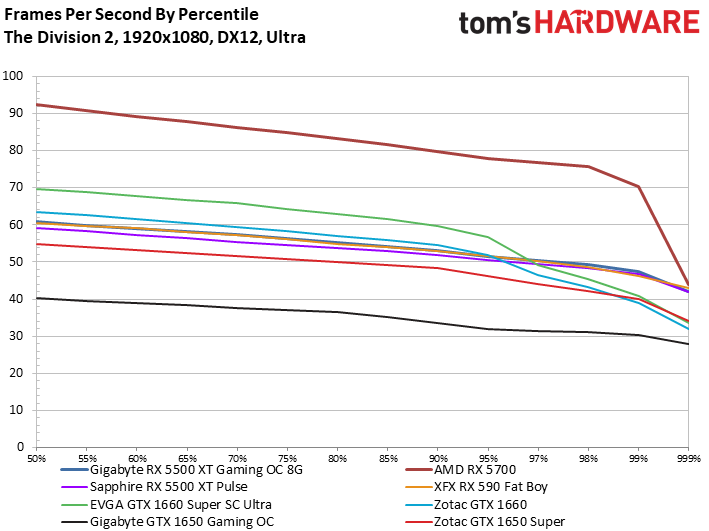
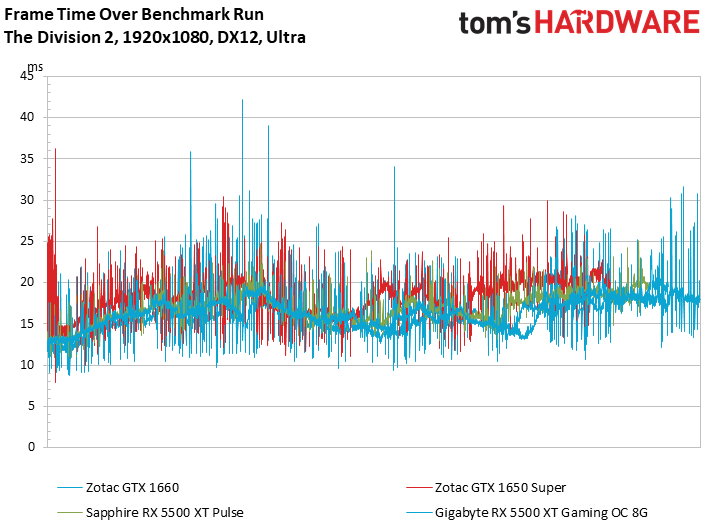
Ghost Recon: Breakpoint


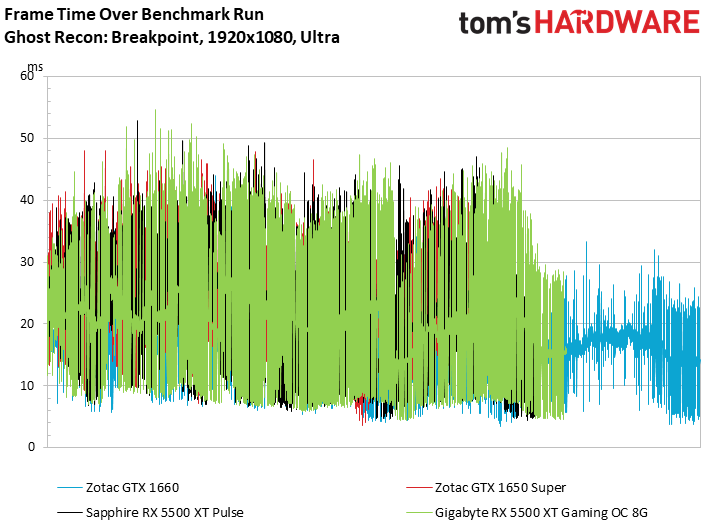
Borderlands 3
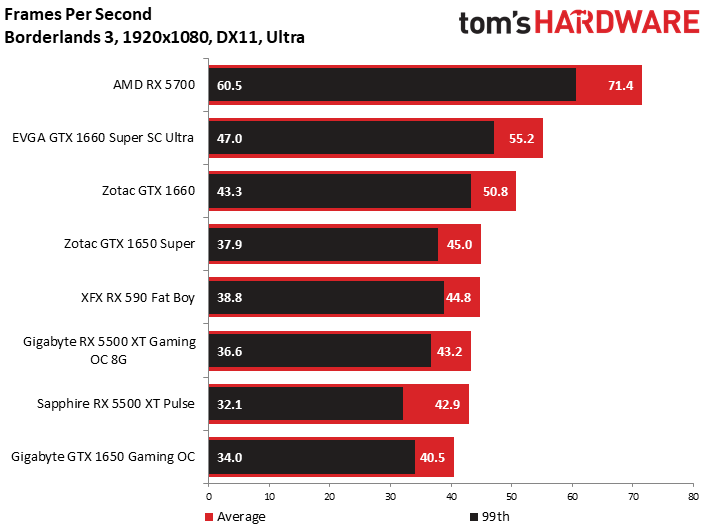


Gears of War 5



Strange Brigade

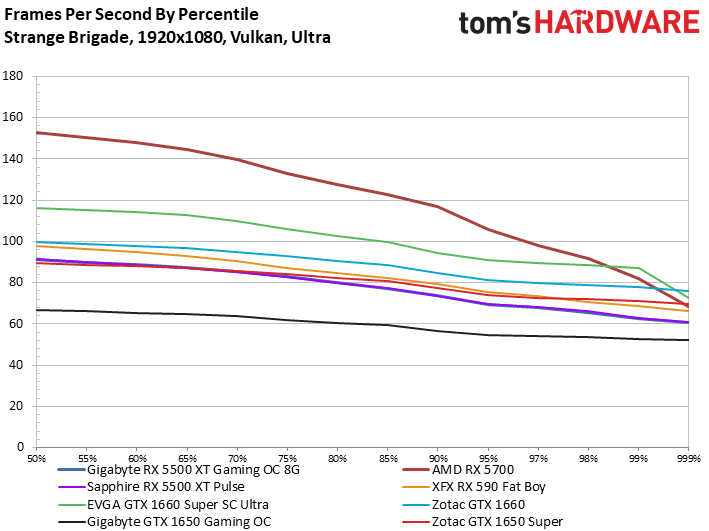

Shadow of the Tomb Raider

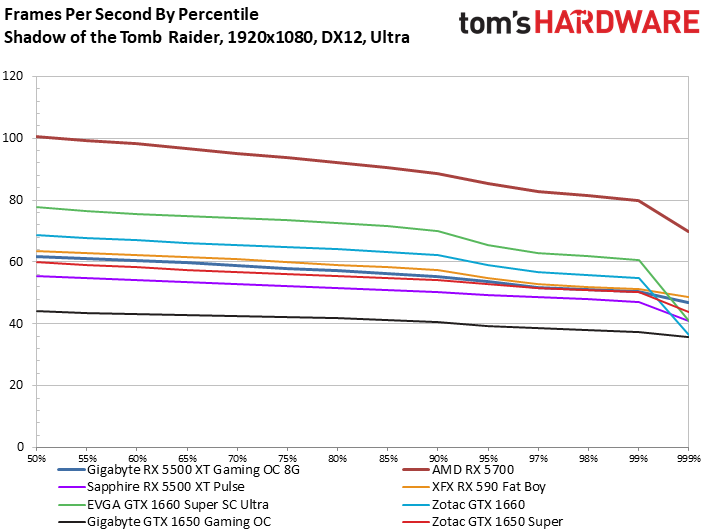

Far Cry 5



Metro: Exodus

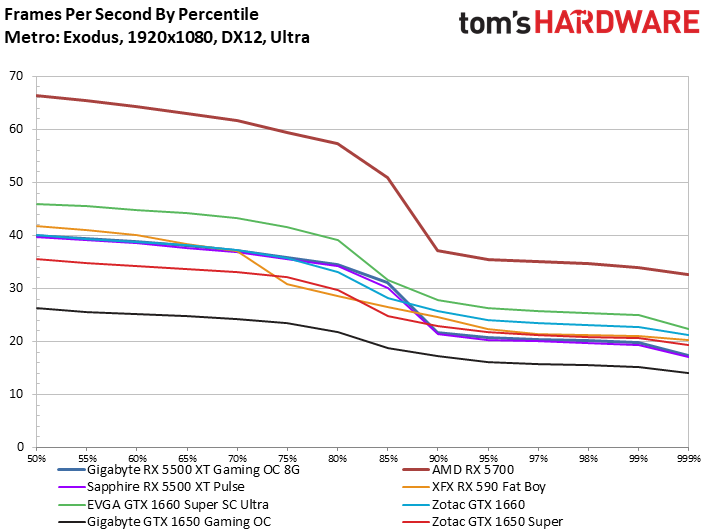

Final Fantasy XIV



Forza Horizon 4



Battlefield V



MORE: Best Graphics Cards
MORE: Desktop GPU Performance Hierarchy Table
MORE: All Graphics Content
Get Tom's Hardware's best news and in-depth reviews, straight to your inbox.
Current page: Performance Results: 1920 x 1080 (Ultra)
Prev Page Features and Specifications Next Page Performance Results: 1920 x 1080 (Medium)
Joe Shields is a staff writer at Tom’s Hardware. He reviews motherboards and PC components.
-
larkspur ReplyThe Windforce 3 cooler has little issue keeping up with the stock power limit of this card.
Yes, obviously. That's why I'm wondering why you didn't crank up the power limit and try some overclocking. This card is begging for it. -
hannibal This card is allready near the upper limit it can get, so it is better to keep it cool and quiet than try to get some extra speed.Reply -
larkspur Reply
No not really... This particular card has an excellent huge cooler and plenty of extra thermal headroom. Look at the temp chart and power usage. The thing isn't even close to maxed-out. Overclocking is exactly why someone would spend extra on this particular card to get this little chip with such a massive oversized cooler... No reason not to at least give it a shot using AMD's own OCing tool...hannibal said:This card is allready near the upper limit it can get, so it is better to keep it cool and quiet than try to get some extra speed.
Furthermore, Igor believes that every Radeon RX 5500 XT should have no problem reaching the 2 GHz mark.
That's from: https://www.tomshardware.com/news/overclock-your-radeon-rx-5500-xt-to-21-ghz-on-air-with-this-tool -
alextheblue Reply
Yeah if you're not planning on overclocking, get a cheaper one.larkspur said:Overclocking is exactly why someone would spend extra on this particular card to get this little chip with such a massive oversized cooler... -
hannibal As we can see from 5700xt. Those huge saphire nitro, asus strix and so on cards Are not faster than much cheaper variants. They just run cooler and quieter that those expensive monster cooled versions.Reply
Same here... -
askeptic Am I the only one who read the entire article and walked away believing that Intel has the edge still?Reply
I don't agree that the AMD would need a custom water loop, but if it did that would throw the price to an absurd amount for that chip.
Intel still wins in the areas where it matters. The only time I would consider the AMD chip would be if my job was to constantly encode videos or unzip files. IE, if I were a creator. Most people are not creators. They may think they are, but they are not.
Software still favors Intel's platform as well. Maybe in 3 more years AMD would be a viable option for most at the high end, but I am just not seeing it. The size of process nodes play no role in my decision as I would never have a reason to care, I just want what is fastest for most applications, and this article leads me to believe that is Intel hands down.
For those videos I use Sony Vegas for twice a year, I guess I will have to wait 120 more seconds than normal.